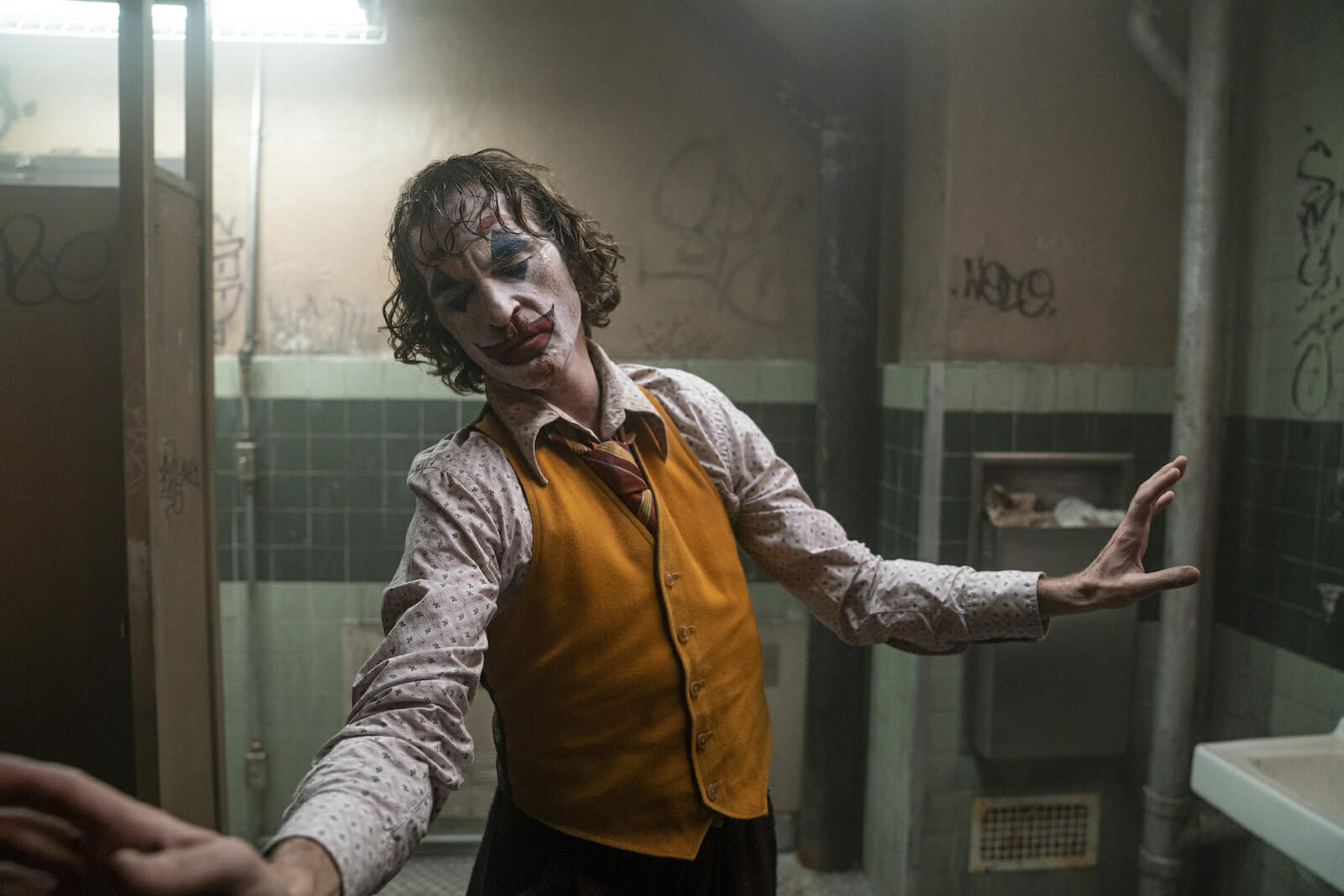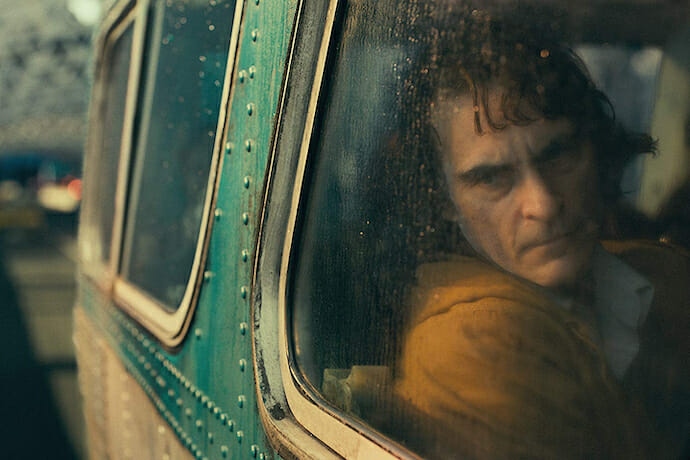
‘Joker’ & the Pathology of Violence
Mild spoilers ahead.
Joker director Todd Phillips and renowned actor Joaquin Phoenix’s new take on an infamous comic book villain will hit the big screen this weekend. It has garnered prestigious awards (such as the Golden Lion), laudatory critic reviews & is expected to attract hordes of eager moviegoers. However, Joker has also inspired ominous think-pieces from publications such as The Atlantic and Vox. Additionally, the U.S. military and the NYPD have expressed concern that the film could inspire violence.
These detractors of Joker are arguing that the film glorifies “incel violence” and is thus likely to inspire acts of incel violence. This logic has been used ad nauseam to condemn everything from comic books to video games, to martial arts, to Marilyn Manson to hip-hop. No credible study has proven that art that portrays violence causes real-world violence. Some people may point out that extreme outliers, like white-supremacist music, could cause violence. However, it would be more logical to argue the opposite: people who compose and listen to white-supremacist music were already enmeshed in a violent ideology. Likewise, genocidal propaganda tends not to focus on explicitly glorifying violence for violence’s sake, but in portraying groups of people as sub-human (Tutsis being compared to roaches, Jews being portrayed as greedy and treasonous, etc.). It’s thus a process of long, gradated inculcation. As Nazi propaganda chief Joseph Goebbels realized, there’s no reverse-Ludovico Technique that can magically turn people into killing machines by quickly showing them a two-hour film.

Now, it is true that a few violent criminals have cited works of art as inspiration for their actions. This is statistically inevitable, but insignificant. There are bound to be a few outliers who have bizarre interpretations on art, just as there are a few people who have been inspired to commit acts of terrorism based on personal interpretations of religion or politics. It’s no more logical to suggest that we ban violent video games or art because of mass shootings than to suggest we ban Buddhism because of Aum Shinrikyo’s gas attack on the Tokyo subway, or that we should ban Irish patriotism because of the IRA. Furthermore, some violent lunatics have been inspired by works of art, such as John Lennon’s killer citing Catcher in the Rye, that aren’t even violent in nature. Clearly, the people who commit mass killings are incredibly unhinged individuals who are in a violent frame of mind, regardless of what media they consume. Likewise, 99.99% of people who play FPS games or who watch slasher flicks aren’t going to go on a shooting rampage or create a torture dungeon in their basement.
To return things to Joker itself, the film in no way “glorifies” violence. For starters, half of the violence is inflicted on the main character (the “incel hero”); there are two scenes where the Joker gets jumped mercilessly and a third scene where he gets sucker-punched in the face. The violent acts that the Joker himself commits are portrayed in a very gruesome manner (in one scene with the Joker and a neighbor of his, the violence isn’t even shown, but is merely implied). When the Joker bashes someone’s head in or shoots someone point-blank, there are no crass jokes, inspirational music or voiceovers quoting The Art of War. The plotline doesn’t imply any justification for the killings. When someone gets killed in the film, audience-goers don’t hoot and holler like they would in a screening of a zombie film or a Nazi-revenge flick like Inglourious Basterds. Rather, there is an awkward pall of silence in the theater at the nihilistic spectacle.
Joker makes it very clear that the title character’s violence is motivated by nothing but his utter insanity. The Joker descends into a killing machine after being released from an asylum and after he stops taking seven different psych meds (which weren’t helping him much, anyway). When being interviewed, he admits that he isn’t compelled by any ideology whatsoever. Rather, the Joker literally views the act of killing as a joke.
Nor does the Joker gain any tangible reward for his violence; he gets fired from his job, arrested, hit by an ambulance and committed to an asylum as a direct result of his actions. Joaquin Phoenix’s character gets a thrill from the media coverage that his killings elicit (and a standing ovation from fellow thugs in the film’s penultimate scene), but that not’s a real reward, but rather a feeling that many real-life killers, in fact, get when they are portrayed in the news. For instance, the as-yet-unidentified Zodiac Killer literally played games with Bay Area news outlets, sending them letters that boasted about his kills, contained cryptic puzzles and threatened to blow up a school bus if he didn’t receive even more media attention. Many other serial killers who were apprehended were found to have hoarded newspaper clippings that documented their crimes. Similarly, coverage of a mass shooting often inspires “copycat mass shootings.” The takeaway from this is that the media should be careful about inadvertently turning stories about mass shootings and terror attacks into personal biographies of the killer. When covering these kinds of attacks, some news outlets, like The Young Turks and The David Pakman Show, deliberately choose to blur the killers’ faces and avoid naming them, so as not to give the killers the attention that they wanted to garner and to avoid inspiring other violently-deranged individuals who crave attention.
The fact that Joker doesn’t merely portray the villain as an Evil-Incarnate caricature doesn’t mean that it is therefore glorifying violence. The audience is meant to sympathize with the Joker when he gets jumped without warning or when he talks about the crippling depression that he has felt for literally his entire life. There are scenes showing the Joker comforting his mother and entertaining sick children. The mere fact that the Joker is portrayed as a full human being, good traits and bad traits, doesn’t mean the film is justifying how he releases his violent rage. No human is evil 100% of the time: there is no villain who tortures hamsters 24 hours a day, 7 days a week. It is only by studying the causes of violent criminals’ various motivations that we can ever hope to ebb the tide of violence. Most violent criminals have suffered from childhood abuse, childhood poverty, a missing parental figure, bullying and/or mental illness. The Joker had to deal with all five of these traumas. By empathizing with these plights, we can create programs (drug treatment programs, stamping out bullying in school, removing children from abusive households, etc.) that can reduce violent crime.
It’s not comfortable to acknowledge that history’s most evil people had humanity or that societal norms (like persecuting people, tolerating child abuse or underfunding mental illness and addiction treatment programs) can fuel violence. It’s evident that Todd Phillips, through his direction and screenplay, and Joaquin Phoenix, through his tortured portrayal of the Joker, meant to give us a glimpse into the mind of a demented killer, not so we can sympathize with the protagonist’s brutal violence, but so we can sympathize with the myriad factors that drove the protagonist to criminal insanity. The nearly uniform media portrayals of mentally-ill individuals as Pure Evil only serves to misinform the public and to scare those suffering from mental disorders from seeking help. Hopefully, the discussions being generated by Joker will encourage people to learn more about complex diseases like schizophrenia and to be more proactive in reaching out to loved ones who are displaying signs of mental anguish.
If you, or someone you know, may be suffering from mental illness, click here to get help.

